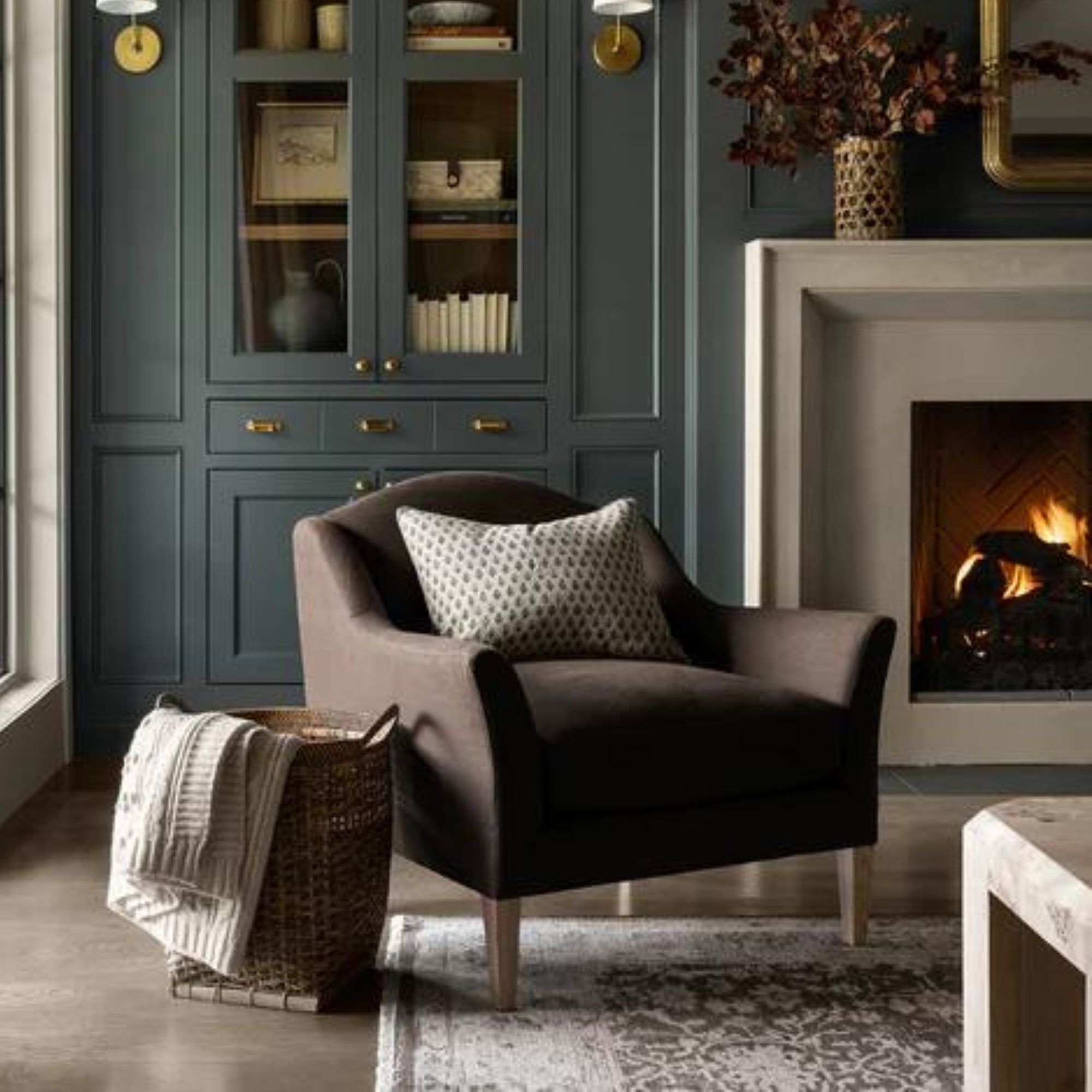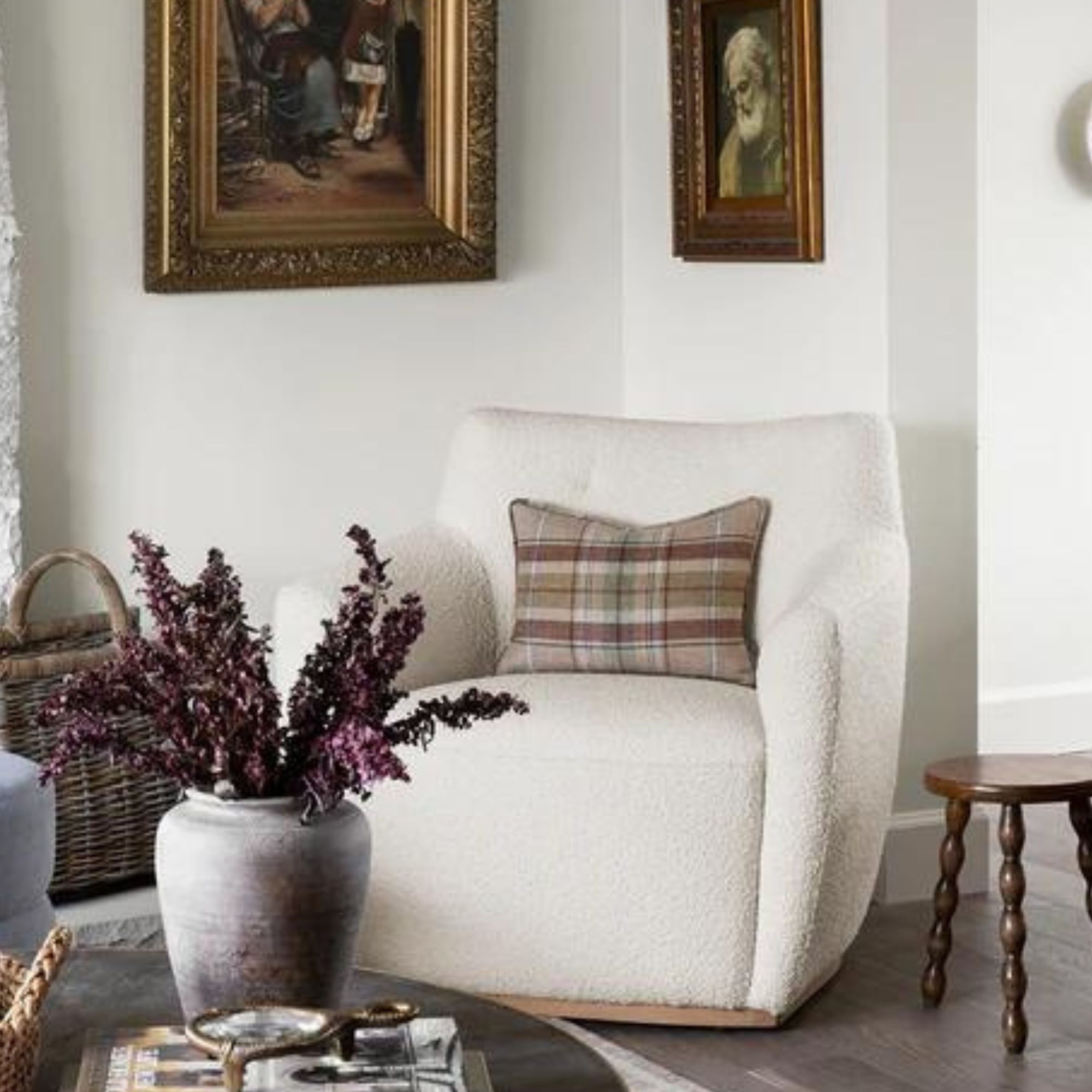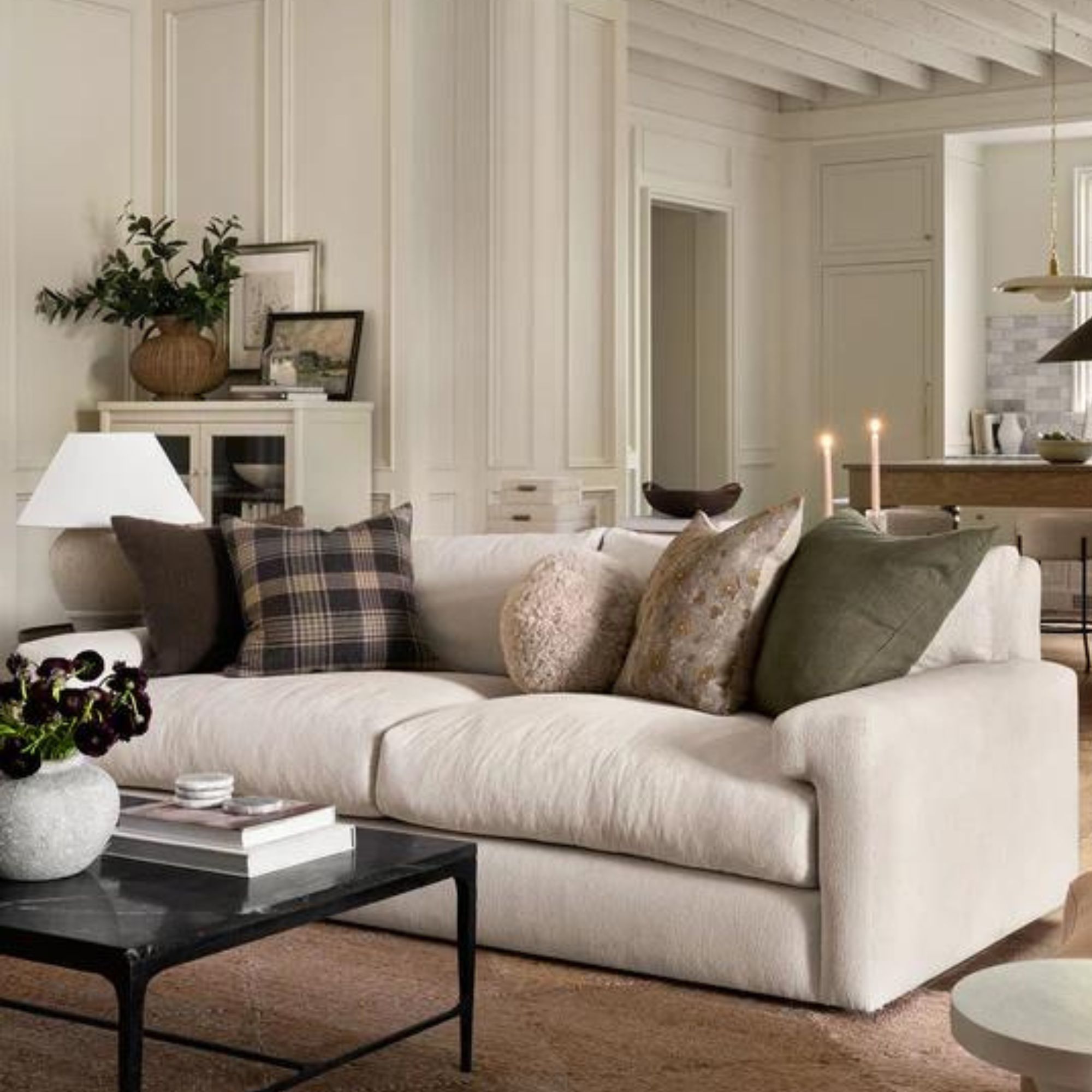What is 'Rich Couch Theory'? Learn how this latest Tik-Tok trend can elevate your living room layout
This TikTok trend has divided opinions, but it is actually achievable in living rooms both big and small


It's no surprise that social media and interior design trends are constantly colliding. Social media holds more influence than ever when it comes to what's popular, and TikTok interior design trends in particular seem to often divide opinions. One such viral sound causing controversy at the moment is the 'rich couch theory'. Some interior designers have mixed feelings on the subject, others feel it has some merit, and it's achievable in homes big and small, not just those deemed 'rich'.
So, what is the rich couch theory and how can homeowners take inspiration for their own spaces? Here, we've asked interior designer Liad Schwartz for their thoughts, and find out how this Tik-Tok-born theory (that's in fact a decades-old trick) can help us rethink our living room layouts.
What is 'rich couch theory'?
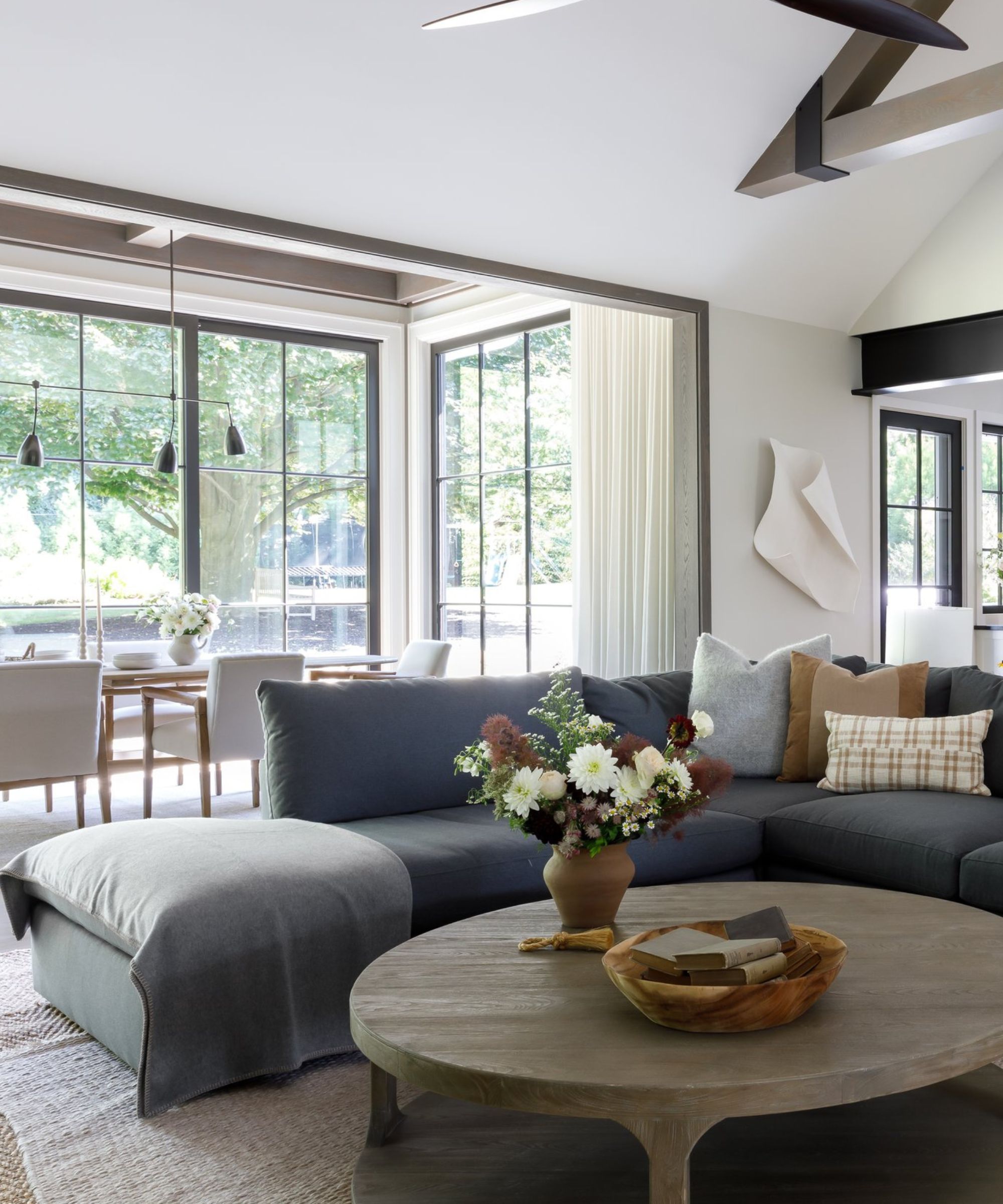
As the viral TikTok sound goes, ‘if the back of their couch touches the wall, then they’re not rich. Rich people, their couches just be out there in the open, their couches don’t touch the wall.’ Rich couch theory is the idea that homes deemed 'rich', and therefore have larger living rooms, feature couches that are placed away from the wall, so you can essentially add a walkway behind them.
Since going viral, the rich couch theory has divided opinions, but there are some interesting cues to take from it. 'You know, I really get where the rich couch theory comes from. It's like a symbol of spaciousness and luxury,' says interior designer Liad Schwartz. 'Imagine having a sofa that's not just tucked against a wall but has its own space to breathe in the room. It creates this feeling of openness and grandness, which often gets associated with wealth,' he adds.
The theory itself eludes more to the idea of large, spacious living rooms and the ability to play with different layout options. However, there are still plenty of ways to make a room feel 'rich' and luxurious even with the sofa against a wall. 'Sometimes, even in a spacious room, you want to make the most of every inch. Placing the sofa against the wall can actually be a smart move in such cases. It's all about maximizing the space while still keeping it stylish and functional,' explains Liad.
How to lay out a living room according to the rich couch theory

So, which is better? Should a couch touch the wall or not? The truth is, there is no right or wrong, or in this case, rich or not rich answer. 'I've had the chance to design both types of living room setups, with the couch away from the wall or snug against it. Honestly, it all boils down to the specific space we're working with and what suits our client's needs best,' says Liad, adding that 'exploring different layouts is like a fun puzzle that helps us understand how a room can flow and function seamlessly.'
Even if you're working with a small living room, you can still create a space that adheres to the rich couch theory. Consider the layout of the living room furniture and how a rejig could help elevate the overall look and feel of the room.
Design expertise in your inbox – from inspiring decorating ideas and beautiful celebrity homes to practical gardening advice and shopping round-ups.
'It's not just about the size of the space; it's about how you plan it out,' Liad points out. 'With careful layout planning and choosing the right-sized furniture, you can definitely achieve that luxurious feel, even in a smaller home. You might need to get a bit creative and maybe sacrifice some pieces, but it's absolutely doable,' he adds.

An achievable way to create the rich couch theory in a small living room is to opt for a smaller sofa and pair it with smaller accent chairs. This way, you give the illusion of space as more of the floor area is accessible, without compromising on seating space. This also gives you the opportunity to introduce different textures, materials and colors through different furniture pieces rather than just having one overriding item.
If moving your sofa away from a wall simply isn't an option in your living room, there are plenty of different ways to add the luxe, elevated aesthetic that is achieved through the rich couch theory, and most of them are smaller alterations.
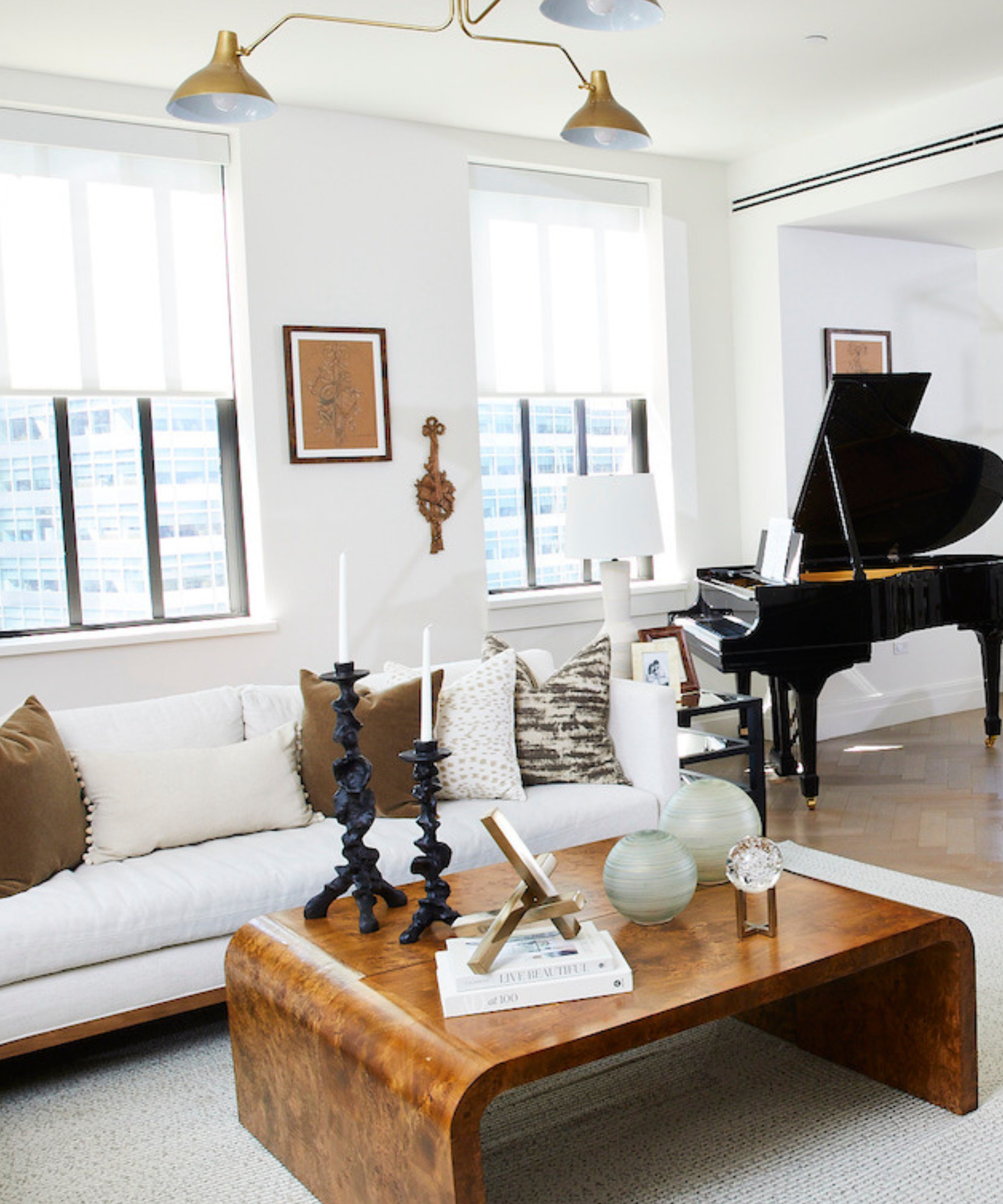
'Creating that luxurious vibe is all about the details. Firstly, having a clear focal point really sets the tone for the room. Then, ensuring there's smooth traffic flow makes the space feel effortlessly elegant. And of course, hiding those pesky wires – no TV or lamp wires in sight, it instantly elevates the space,' advises Liad.
One style choice that's dominating interior design trends in 2024 is ditching the matching furniture sets for a more eclectic, collected look. 'Opt for unique, standout pieces to add that touch of luxury and comfort that makes a house feel like a home,' recommends Liad. This will not only add an abundance of character and personality to your space, but it will create a sense of grandeur even if the size of your living room is more modest and even if your couch touches the wall.
The rich couch theory might initially feel like a design style suited to large living rooms, but this layout can be achieved in rooms of any size and layout with some thoughtful planning. But the big takeaway is that spaces with sofas touching the wall can be just as luxurious, it's all about how you style them.

I’ve worked in the interiors magazine industry for the past five years and joined Homes & Gardens at the beginning of 2024 as the Kitchens & Bathrooms editor. While I love every part of interior design, kitchens and bathrooms are some of the most exciting to design, conceptualize, and write about. There are so many trends, materials, colors, and playful decor elements to explore and experiment with.
